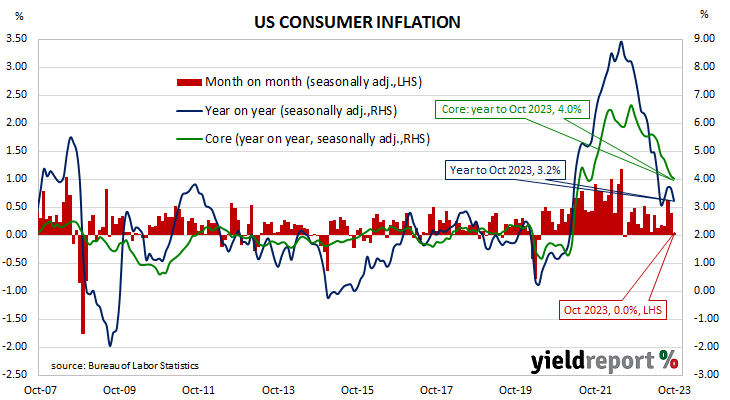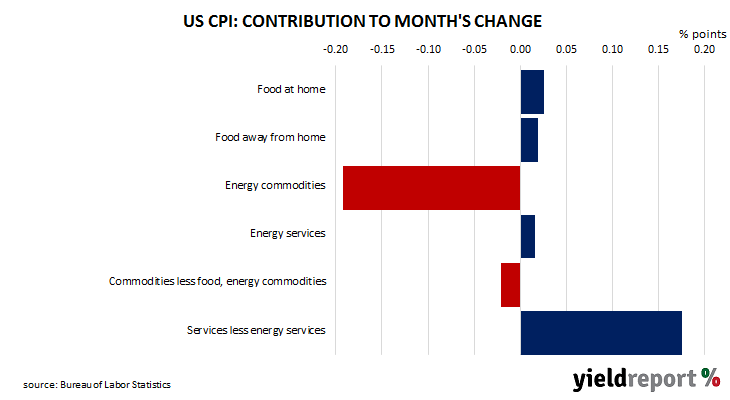Summary: US CPI flat in October, below expectations; “core” rate up 0.2%; ANZ: monetary restraint having desired outcome on inflation, labour market; Treasury yields plunge; rate-cut expectations harden; energy prices main driver.
The annual rate of US inflation as measured by changes in the consumer price index (CPI) halved from nearly 3% in the period from July 2018 to February 2019. It then fluctuated in a range from 1.5% to 2.0% through 2019 before rising above 2.0% in the final months of that year. Substantially lower rates were reported from March 2020 to May 2020 and they remained below 2% until March 2021. Rates have since risen significantly, although they have been declining since mid-2022.
The latest US CPI figures released by the Bureau of Labor Statistics indicated seasonally-adjusted consumer prices remained flat on average in October. The result was below expectations of a 0.1% rise as well as September’s 0.4% increase. On a 12-month basis, the inflation rate slowed from 3.7% to 3.2%.
“Headline” inflation is known to be volatile and so references are often made to “core” inflation for analytical purposes. The core prices index, the index which excludes the more variable food and energy components, increased by 0.2% on a seasonally-adjusted basis over the month, less than the 0.3% which had been generally expected. The annual growth rate slowed from 4.1% to 4.0%.
“Increasingly it looks as if the level of monetary restraint is having the desired outcome on both inflation and the labour market,” said ANZ economist Madeline Dunk.
US Treasury bond yields plunged across the yield curve on the day. By the close of business, the 2-year Treasury yield had shed 20bps to 4.84%, the 10-year yield had lost 19bps to 4.45% while the 30-year yield finished 13bps lower at 4.63%.
In terms of US Fed policy, expectations of a lower federal funds rate in the next 12 months hardened. At the close of business, contracts implied the effective federal funds rate would average 5.33% in December, in line with the current spot rate, 5.33% in January and 5.295% in March. November 2024 contracts implied 4.495%, 84bps less than the current rate.
“The detail within the CPI report probably does not justify the eagerness with which the market wants to bring forward US rate cuts and take bond yields lower,” said NAB Head of Research (Markets) Skye Masters.
The largest influence on headline results is often the change in fuel prices. Prices of “Energy commodities”, the segment which contains vehicle fuels, decreased by 4.9% and contributed -0.19 percentage points to the total. Prices of non-energy services, the segment which includes actual and implied rents, also had a significant effect on the total, adding 0.18 percentage points after increasing by 0.3% on average.



